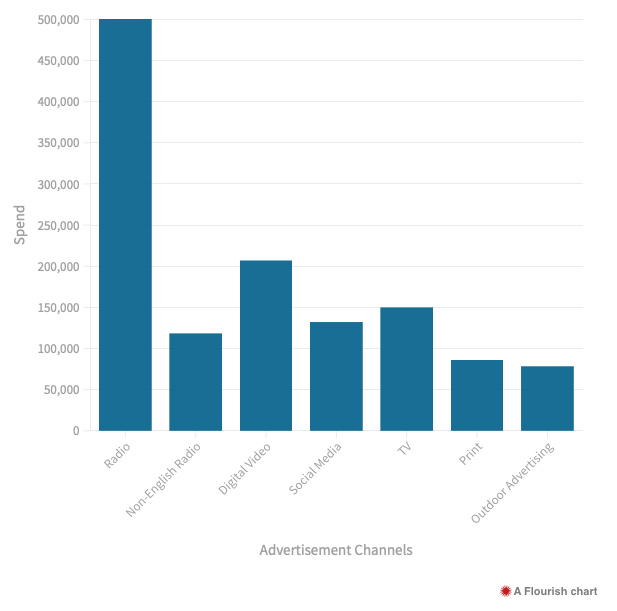The $1.3 million the Government has spent on Covid-19 advertising since the resurgence of community cases two weeks ago may have missed the people at the centre of the outbreak, a marketing expert says. Covid-19 messaging has been slammed as irrelevant to young people and non-English speakers despite the latest Auckland cluster being based around a high school in an area with a large population of diverse ethnic communities. The bulk of the $1.34m spent on Covid-19 advertising since February 14 had been allocated to radio, with $500,000 for English-speaking stations and an additional $118,000 for non-English radio stations.
University of Auckland marketing associate professor Mike Lee said trying to target young people through radio advertisements was counterintuitive. “Younger people are more likely to listen to music on streaming services like Spotify. And during a lockdown, people aren’t travelling in cars to school or work, so even fewer people would be listening to the radio,” Lee said.
Reports of people flouting the rules in the latest community outbreak had led to suggestions that tougher penalties for those not following the rules should be imposed.
But South Auckland councillor Fa’anana Efeso Collins said the latest outbreak was also a failure on the part of officials in overestimating how well informed people were about the need to self-isolate. Collins said it was telling that non-English speaking radio had received about a fifth of the spend that English-speaking stations had received. “The Government seems to be targeting the same people over and over again across platforms. The same English-speakers that tune into the press conferences are getting targeted on English radio or TV channels,” Collins said. He said it was “frustrating” that not enough investment was going to non-English media.
“It’s not just about translating a pamphlet into different languages. It’s about the approach, making sure that there’s people on the ground making sure the messaging gets across,” Collins said. “The people dreaming up ideas in their ivory towers don’t know how their messages are being received by the community.” Advertising agency Quantum Jump chief executive Ben Goodale said the advantage of using radio was that it targeted a large group of people across demographics.
“With this campaign you need massive reach and there is a radio station for everybody. Through radio, advertisers can micro-target different ages, life stages, and ethnicities,” Goodale said.
Goodale said the most effective advertising campaigns were spread across different platforms.
The Government spent the second largest amount on video advertising, with $207,000 spent on clips on platforms such as YouTube. The Government spent $150,000 on television advertising and $132,209 on social media, including Facebook, Instagram, Twitter and TikTok. Collins said the amount spent on social media was too low, particularly if the Government’s focus was to target youth. Covid-19 social media pages had about 70,000 followers on Instagram, 220,000 on Facebook, 30,000 on Twitter and just 65 followers on TikTok, with one video of Director-General of Health Dr Ashley Bloomfield posted in December. About $86,000 was spent on print advertising and finally $78,000 was spent on “outdoor advertising” which included posters and billboards.
By Anuja Nadkarni, Business Reporter.

Goodale said $1.3m over two weeks was “heavy” spending on media. “A retail advertiser may spend about $350,000 a week if they were really going for it.”
Last year before the August lockdown, the Government spent nearly $21m <a href=”https://www.stuff.co.nz/business/industries/123212411/government-spends-20-million-on-covid19-advertising-campaign-delivered-at-breakneck-pace”>on two Covid-19 advertising campaigns</a>: Unite Against Covid-19 and Unite for the Recovery.
Diversity, Inclusion and Ethnic Communities Minister Priyanca Radhakrishnan earlier said the Government <a href=”https://www.stuff.co.nz/national/politics/124392502/covid19-young-people-to-government–your-message-is-too-old-too-stale-and-way-too-long”>had translated Covid-19 messages</a> into about 20 of the 160 languages spoked across Aotearoa. Public health services in Auckland had translated advice into 43 languages, she said. Radhakrishnan, also Youth Minister, was confident the ministry was engaging with youth organisations, particularly to find out what further help they might need.
Goodale said that overall, the Government’s Covid-19 advertising since March last year had been “excellent”. The only area for significant improvement, he said, was advertising encouraging people to use the Covid-19 tracer app messaging outside of lockdowns. “There’s a reason why retailers advertise every week. Despite the fact you know the retailers are there, you need to be reminded.”
“A similar aggressive strategy needs to be employed while encouraging people to scan when there isn’t a community case. You have to constantly remind, remind, remind,” Goodale said.

